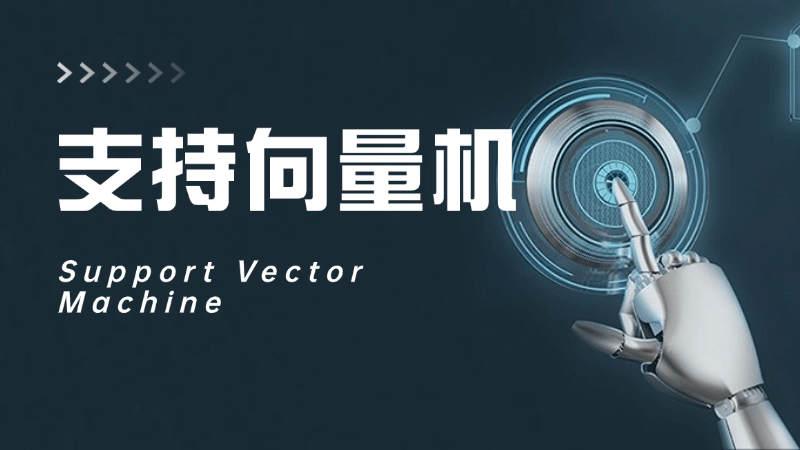What is Claude? How to use this big AI model and how to use Claude in Chinese?
Claude AI: Revealing the mysteries of future conversations
Claude is a conversational AI service developed by Anthropic and backed by tech giants such as Amazon and Google, the name Claude not only represents the service itself, but also symbolizes the advanced AI model that underpins its operation. Users can use Claude by visiting its website, similar to the way they interact with ChatGPT, while developers can integrate it into their on-premises applications through the Claude API.
According to Anthropic's official description, Claude is capable of handling a wide range of textual tasks, from document generation and letter writing to question and answer answering, and not only edits, rewrites, summarizes, and categorizes, but also takes on a variety of roles in conversations to make the process of communicating more natural and authentic. Deeply trained on large amounts of data, Claude is multilingual and programmable to meet complex challenges in cultural, technical and professional domains. In addition, Claude has the ability to automate workflows based on user instructions, solving a wide range of tasks in an organized manner.
It is important to note that Claude does not have direct access to the web, so users will have to manually enter relevant information to interact with it.Claude follows Anthropic's core philosophy of "HHH" (Helpful, Honest, and Harmless), and is committed to generating content that is helpful, honest, and harmless. Honest, and Harmless" (HHH), which is dedicated to generating content that is helpful, honest, and harmless. To ensure this standard, Anthropic utilizes a unique training methodology.
Anthropic specifies that the cutoff date for network training data for the Claude 3 model is August 2023(math.) genusAnd the Claude 3.5 model is updated to April 2024Claude's training data includes not only public web information, but also involves unpublished data from third parties, Anthropic's own user data, and data provided by specialized tagging companies.
How do I sign up for a Claude account? Can I use it on my cell phone?
As Claude continues to be iteratively updated, users can now use Claude on the web, Android phones, and Apple phones; however, Anthropic has not yet released an app for computers.
Anthropic says users can continue previous conversations on different platforms, and supports visual features such as taking photos and uploading images, as well as multi-language support such as translation, and describes Claude's capabilities as "advanced reasoning".
If using the web version, users can simply visitClaude's official websiteTo start the registration process, enter your e-mail address or use your Google account.
You can't register a Claude account in China, so you can use it directly without registration.Claude Mirror Station: Sonnet, Haiku, Opus full range of models for free!

Complete the entry of your email address or Google account to initiate the registration process. Screenshot from Claude's official website
In addition to entering your name, you will be required to provide your cell phone number to receive an authentication text message, and you will be able to use Claude only after authentication.

After entering your name and cell phone number, you need to go through an authentication SMS. Screenshot from Claude's official website
Prior to use, Anthropic alerts users to situations they may encounter, such as the generation of misleading or offensive content.
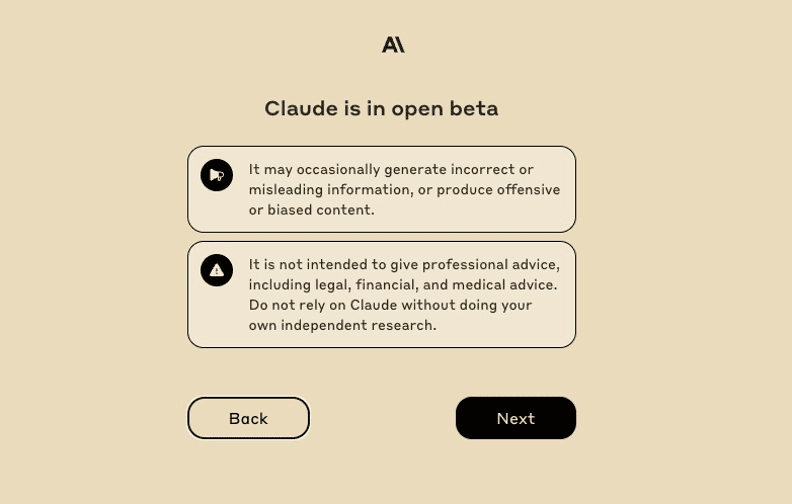
Prior to use, Anthropic informs the user of what they may encounter. Screenshot from Claude's official website
Once registration is complete, you can start using Claude, which currently uses the latest Claude 3.5 model by default. In addition to the basic Q&A function, Claude reminds users that they can upload photos and images and extract useful information from them, and when using it for the first time, Claude also asks if the Artifacts function is enabled.

Once you have registered, you can start using Claude. screenshot from Claude's website
How do I use Claude?
Test 1: Parsing Long Text
Like ChatGPT, Claude can also start a Q&A exchange, but its significant advantage is its superior memorization ability to handle a much larger context window than ChatGPT.

Claude is able to take on long contexts that go beyond ChatGPT. Photo credit: Claude's official website
When long documents need to be parsed, especially PDF files such as dissertations, research papers or lengthy works, they can be uploaded to Claude for processing.
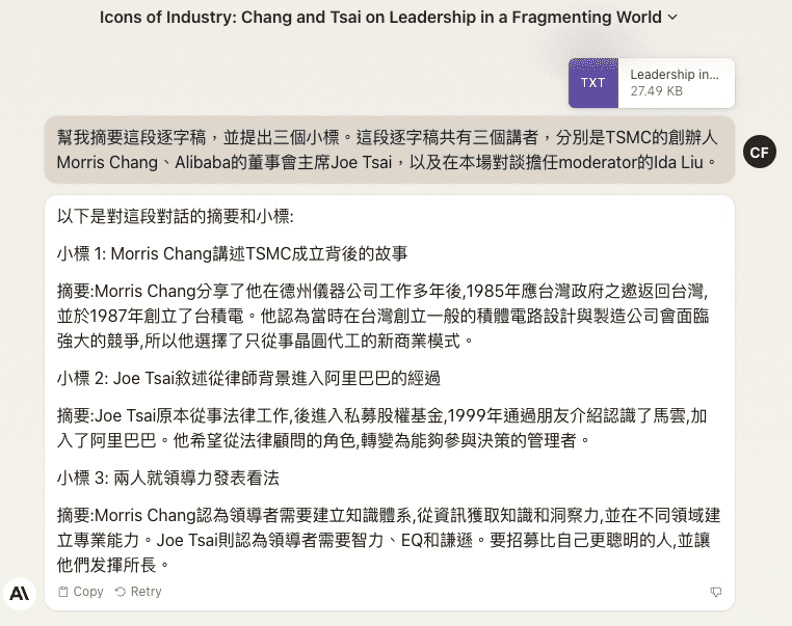
After uploading the verbatim (txt file), Claude quickly and accurately parsed the full text and distilled three key points. Source: Claude's official website

After uploading the consumer controversy report (pdf file), Claude was equally able to identify the trends. Image source: Claude official website
However, as a large language model, even with Claude's robust processing capabilities, it still struggles to completely circumvent the generation of fictitious information due to the unenabled network feature. While ChatGPT has put in many efforts to reduce the occurrence of false information in the recent past, Claude's updates also show a decrease in the frequency of its illusions, with the model explicitly rejecting unfounded information or confirming the content of the question with the user in order to prevent the generation of fictitious content.
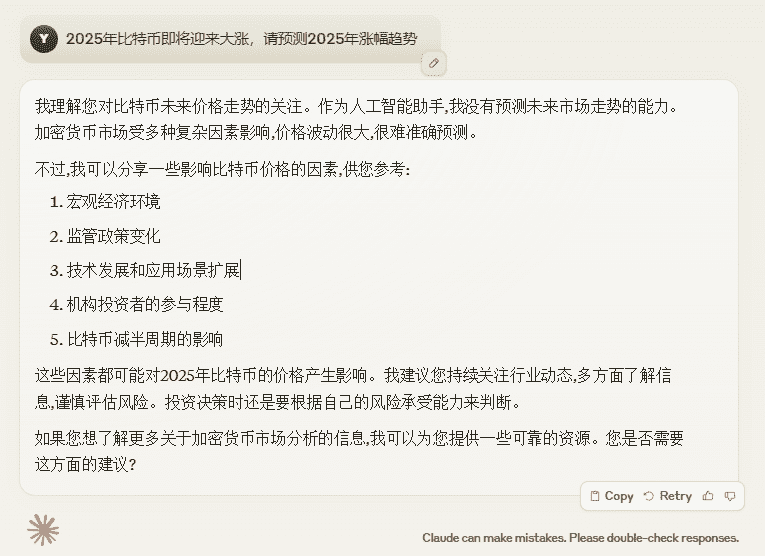
Claude has no way of knowing the future price of Bitcoin. Photo credit: Claude's official website
Test 2: Quick insight into the charts
In testing the multimodal capabilities of Claude 3.5, the performance was impressive. Uploading a cluttered desktop illustration, Claude not only accurately parsed the meaning of the diagram, but was also able to identify the illustrative text on the diagram and the color scales and their corresponding values in the legend.

Claude 3.5 The interpretation of the chart is accurate. Screenshot from Claude's official website
One of the notable highlights of this update is Artifacts, and the real-world testing has been excellent.
Test 3: Instantaneous copying of web pages
After uploading a screenshot of the front page of the website, Claude was requested to generate the front-end code. Although Claude was unable to reproduce the photo due to lack of internet access, the rest of the content such as title, summary and date were successfully reproduced, along with the article channels and listings at the top of the site.
In addition, Claude was able to face the challenge of illegible text and reproduce the content accurately, even at the smallest screenshot size.

With the Artifacts feature, Claude shows the results window of the generated content. Taken from Claude's dialog page
Since the reproduced page lacked a subscription feature, Claude was asked to add that feature, and it complied, successfully.
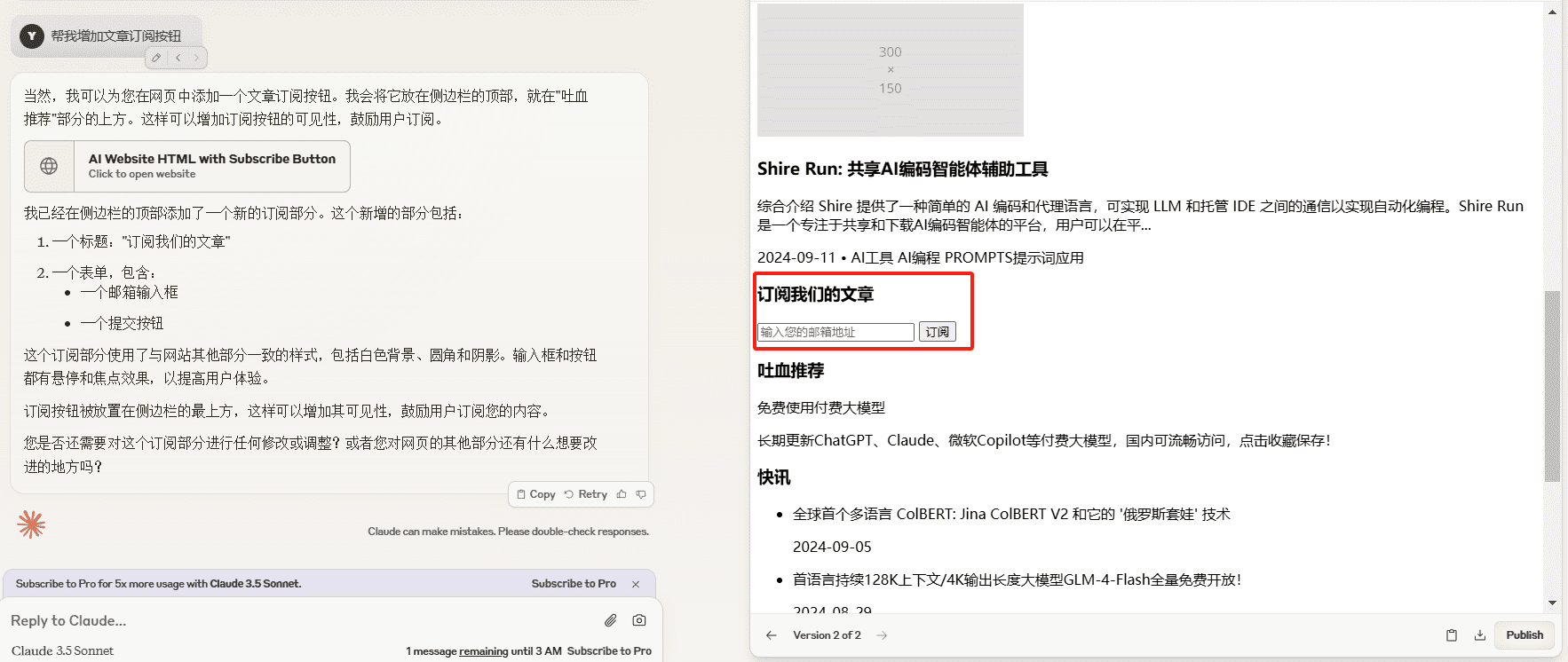
After requests for improvements, Claude made adjustments accordingly. Taken from Claude's talk page
Claude's paid version, Claude Pro, currently costs $20 per month and is available to users worldwide. Compared to the free version's usage limit, Claude Pro users enjoy five times the amount of conversations and the ability to call up Claude 3 Haiku and the previous top-performing Claude 3 Opus models much faster.
Similar to ChatGPT Plus, Claude Pro users also have priority access when site traffic peaks and are able to get a head start on future new features.
Test 4: Comparison of Programs
Comparisons are often necessary in life, whether it's cell phone rates or differences in insurance company plans, and this time we tested Claude's different rate plans.
Opened the charge page on Anthropic's website, took a screenshot of the webpage, and uploaded it directly into the Claude dialog.
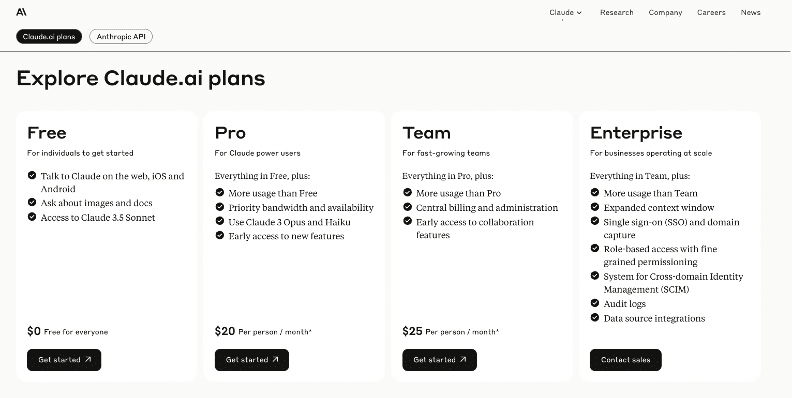
Claude's fee program. Taken from Anthropic's official website
Claude quickly recognizes the benefits of the four scenarios from the images, and its ability to automatically extend the "better than free" information into new columns is extremely helpful when writing forms.

Claude's comparison of fee programs. Taken from Claude's talk page
Claude Enterprise Launches: Taking on ChatGPT Team and Copilot?
In September 2024, Anthropic announced the release of Claude for Enterprise, a new product designed to empower teams in collaboration.
Anthropic The strategic focus of the team is centered on two main areas:** First, to improve the efficiency of the team; and second, to guarantee the team's security during the development process. **
Similar to OpenAI's ChatGPT, Google Workspace, and Microsoft Copilot in terms of efficiency gains, Anthropic emphasizes that Claude's core strength is the ability to integrate knowledge within an organization to extend its capabilities. This integration across projects and teams will greatly facilitate the decision-making process and avoid the problem of information silos.
Compared to Claude Team for small teams, the main highlight of Claude Enterprise Edition is its greatly increased context window of 500k, compared to 200k in the Personal and Team editions, which makes it easy for team members to upload a large amount of internal documents, enabling Claude to learn more effectively. In addition, Claude Enterprise Edition also integrates with GitHub, making it easy for developers to synchronize their repositories.

In September 2024, Anthropic launched Claude Enterprise Edition for teams of 500+ people. Image credit: Anthropic official website
According to Claude's website, Midjourney, GitLab and Airtable are already using Claude Enterprise Edition.
In addition to improving efficiency, security during team development is a top priority. anthropic lists a number of Claude Enterprise Edition features, including Single Sign-On (SSO) and Domain Acquisition: these ensure secure management and centralized control of user access, a cross-domain Identity Management System (SCIM), and user-role based permission settings.
What is the difference between the free version of Claude and the paid version (Pro, Team, Enterprise)?
The differences between the free version of Claude and the paid versions of Pro, Team, and Enterprise are in the models and usage priorities.
| Program type | free (of charge) | Pro | Team | Enterprise |
| Monthly cost | 0 dollars | $20/month | $25/month per person | Contact Business |
| Applicable objects | beginning student | power user | Rapidly growing team | major industry |
| Platform access | Web, iOS, Android | Web, iOS, Android | Web, iOS, Android | Web, iOS, Android |
| Search for documents and images | ✓ | ✓ | ✓ | ✓ |
| Claude version | Claude 3.5 Sonnet | Claude 3.5 Sonnet, Claude 3 Opus, Haiku | Claude 3.5 Sonnet, Claude 3 Opus, Haiku | Claude 3.5 Sonnet, Claude 3 Opus, Haiku |
| utilization rate | (an official) standard | Higher than the free version | Higher than Pro version | Higher than Team Edition |
| context window | Depending on the amount used | 200k+ | 200k+ | 500k |
| Priority of use | (an official) standard | Priority use, free version five times | Priority use | Higher priority for use |
| Early Functional Access | - | ✓ | ✓ | ✓ |
| Centralized billing management and administrative functions | - | - | ✓ | ✓ |
The power of Claude 3.5: The significance of Artifacts' new features
In March 2024, Anthropic released three models in the Claude 3 series, Claude 3 Haiku (haiku), Claude 3 Sonnet (sonnet), and Claude 3 Opus (numbered piece of classical music).
June 2024Anthropic has released the Claude 3.5 Sonnet model!and that the Claude 3.5 Haiku and Claude 3.5 Opus models will be available at a later date.
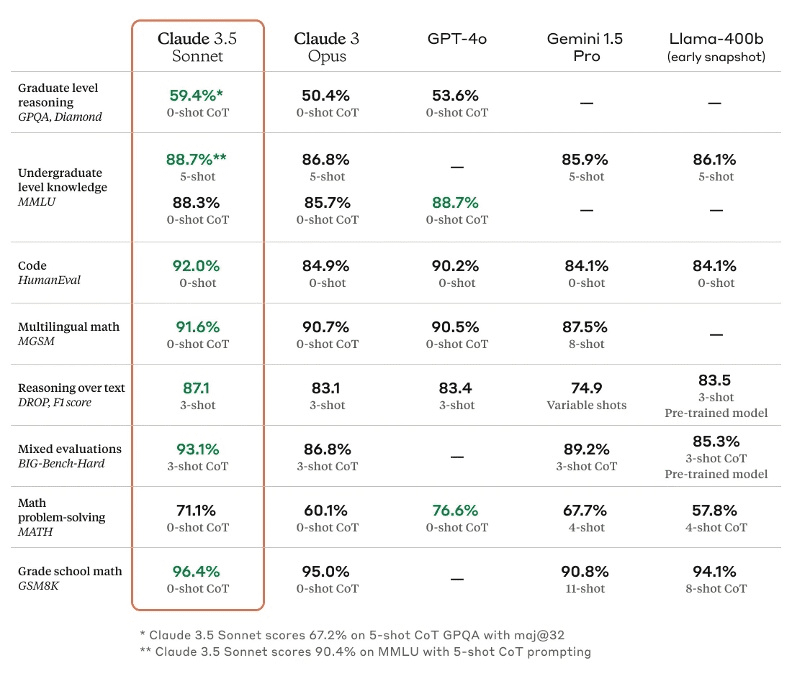
The results of each AI model ability evaluation. Image credit: Anthropic official website
According to Anthropic's own testing, Claude 3.5 Sonnet outperforms competitors such as Meta, Google, and OpenAI across the board in reasoning, math operations, and college-level knowledge performance, whether it's OpenAI's spring release of GPT-4o, Google's Gemini 1.5 Pro, or Meta's (Facebook's parent company) Llama-400B, can't match the Claude 3.5 Sonnet.
With the growing trend toward multimodal technology, Anthropic further included the visual capabilities of the Claude 3.5 Sonnet in the comparison, claiming that it also outperforms all of its competitors when it comes to text processing in images. In particular, Claude 3.5 Sonnet is still able to accurately transcribe defective text in images, a feature that is extremely valuable for scenarios in industries such as logistics, retail and finance.
In the case of logistics, for example, a large number of handwritten shipping documents that used to be processed using Optical Character Recognition (OCR) technology can now be accomplished with the help of a basic AI model with visual capabilities. This is a clear case of advances in large language modeling technology driving vertical applications.

The workflow of the logistics industry generates a large number of documents, but not all of them are structured data, so many of the accuracy challenges of data conversion need to be addressed urgently. Photo by Zeng Zixuan
For users familiar with the generative AI services of major enterprises, the self-proclaimed "strongest model" is no longer rare, but the actual effect still needs to be verified by the market.
In terms of model performance, accessing the prestigious list of internationally rated large language models in early September 2024, operated by the University of Berkeley LMSYS At that time, Claude 3.5 Sonnet was ranked sixth in terms of overall power, behind the latest version of GPT-4o released in August, the latest version of Gemini 1.5 Pro released in August, the latest version of Grok-2 released in August, and not as good as the version of GPT-4o released in May. Considering that the Claude 3.5 Sonnet was only on the list in June, it's hard to tell who will win if the newer version comes out.
Quite a highlight in rewriting and translating the code
Comparing Anthropic's two updates released in March and June, the former made improvements in improving answer accuracy, accurately determining user intent, enhancing multimodal capabilities, providing a structured output format, and function call functionality, while this update adds Artifacts functionality, improves answer speed, and puts a lot of effort into generating, rewriting, and "translating code generation, rewriting and "translation".
Claude has emphasized throughout that his model has extraordinarily long contextual processing capabilities as well as extremely fast response times.
For business users in the customer service and e-commerce space, the value of such a service will be greatly reduced if the conversational bots have long delays in calling APIs, causing customers to wait and feel agitated. As a result, Anthropic strongly believes that knowledge retrieval and automated sales will be important arenas in the future.
However, at Google I/O, Google introduced to the public the adjusted architecture of the Gemini 1.5 Flash model, which is much more responsive despite its smaller size, and opens up for the first time to a length of 1 million on the processing of tokens (token, which will be used interchangeably in the following), which will be expanded to 2 million in the future, and the research progress has reached 10 million. OpenAI's GPT-4o also pursues low latency, posing a great challenge to Anthropic.
Anthropic notes that Claude 3.5 Sonnet currently offers a context length of 200,000 tokens. What this means is that a token is the smallest unit of text that a computer can understand, and that words, sentences, and paragraphs can be tokens, while the tokens mentioned in Claude 3.5 and GPT-4's explanatory documents are in fact smaller units than words.According to OpenAIFor Chinese, each token is approximately equal to the length of 4 English letters, or 0.75 words. As for Chinese, each character is a token.
So, assuming a 500-word English article or a 1,000-word Chinese article, for example, Claude 3.5 Sonnet is capable of processing 300 English articles or 200 Chinese articles, which is amazing. And, as Anthropic mentioned before, Claude 3 is actually capable of processing more than 1 million tokens in terms of modeling power alone, so it can be expected that the most powerful Claude 3.5 Opus is also capable of processing millions of tokens.
In the actual use of the paid version of ChatGPT and Claude 3.5, the latter handles long articles extremely fast and does not miss the middle and end paragraphs of the article, which is very suitable for handling academic research, industry reports and other long documents; in addition, after adding the Artifacts feature, users can adjust the code more finely, greatly improving productivity.
Comparison of ChatGPT, Gemini and Claude model API contexts
| introducer | mould | API Processing token Number (million) |
|---|---|---|
| Anthropic | Claude 3.5 Sonnet | 20 |
| Anthropic | Claude 3 Opus | 20 |
| Anthropic | Claude 3 Sonnet | 20 |
| OpenAI | GPT-4o-mini | 12.8 |
| OpenAI | GPT-4o | 12.8 |
| OpenAI | GPT-4-turbo | 12.8 |
| OpenAI | GPT-4 | 8 or 12.8 |
| Google Internet company | Gemini 1.5 Pro | 200 |
| Google Internet company | Gemini 1.5 Flash | 100 |
Note: the number of tokens the model can handle may change as companies roll out new versions; Claude is primarily known by the context window
At a time when [the speed and contextual length of answers in large language models has become a competitive field and the smoke of a price war has been lit, Anthropic has introduced a new feature: artifacts (directly translated as artifacts, artifacts).
Top 3 Benefits of Artifacts' New Features
According to Anthropic, when users utilize Claude to generate code, website design, or text, Claude will independently generate a dynamic interface that allows team members to complete the following tasks faster in meetings:
1. Discuss the idea of a web page or article using Claude, while previewing the resulting web page or article through Artifacts
2. Presented in a stand-alone interface for easy reference and discussion by team members, increasing the efficiency of understanding and communication
3. If the results are good enough, they can be downloaded directly with one click, eliminating the need to search for answers and copy them in mixed messages in the chat.
Anthropic emphasizes that this feature makes Claude more than just a conversational AI service, but a step towards a collaborative work environment (collaborative work environment) that enhances the possibilities of teamwork. It is foreseeable that, in addition to the paid version of Claude Pro and developer calls supporting AWS and Google Cloud, Claude may also launch a service similar to Copilot or ChatGPT Team, competing with other tools in multi-person collaboration scenarios, making Claude the team's right-hand man (teammate).
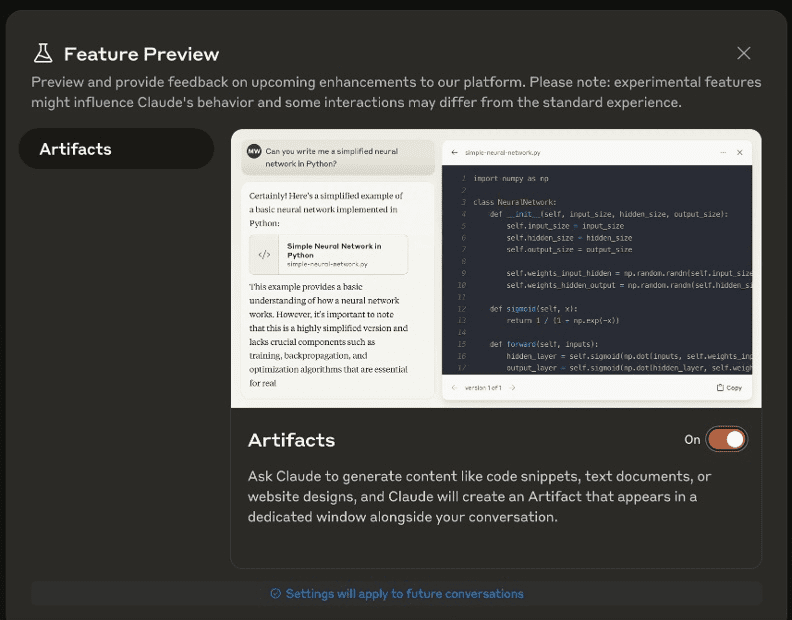
When a user generates code, website design, or text with Claude, Claude generates a separate dynamic interface that immediately displays the results, allowing the user to adjust the generated content in real time. The image is taken from the Claude dialog page.
Anthropic pushes the envelope, OpenAI veteran behind Claude
Anthropic's founders, siblings Dario Amodei and Daniela Amodei, held top management positions at OpenAI, which developed ChatGPT, before founding Anthropic. Brother Dario served as vice president of research and development, while sister Daniela served as vice president of security and policy.
Dissatisfied with OpenAI's direction of accepting a $1 billion investment from Microsoft and dramatically transitioning to industrialization, the brother-sister duo left the company in 2021 and took nine employees with them to co-found Anthropic, Venture Beat reports.They aim to build a more transparent and trustworthy AI system. Similar to them is Tesla founder Musk, who also opted out of OpenAI due to dissatisfaction with its capitalization path.

Dario Amodei, one of Anthropic's founders, was OpenAI's VP of R&D. wikimedia commons by TechCrunch
Looking at the trajectory of OpenAI today, it's clear that it's drifting away from the original intentions of Dario and Daniella.
The Information reports that OpenAI CEO Sam Altman is considering an overhaul of OpenAI's original, complex organizational structure, shifting entirely from nonprofit to for-profit in order to make the company's for-profit arm less beholden to a nonprofit board of directors, in an attempt to compete with Anthropic and Musk's xAI in an attempt to compete with Anthropic and Musk's xAI.
OpenAI, which is currently unlisted, is valued at $86 billion, and its annualized revenue has reached $3.4 billion based on the past six months of revenue data.
Also last week (June 19), Ilya Sutskever, the former chief scientist who pushed for Ultraman, announced the creation of a company called Safe Superintelligence (SSI), which aims to develop Safe Superintelligence.
Unlike OpenAI, Anthropic has always had safety and trust at the center of its mission. For Dario and Daniella, who were both named to TIME Magazine's "100 Most Influential People in AI" list, ensuring that AI systems are aligned with human values is of the utmost importance. This makes them stand out among the many companies working on AI technology and applications.
In the field of machine learning, the decision-making process of AI is often compared to a "black box". As a result, many researchers are working to unravel this black box, to analyze the reasons for AI decisions, to introduce explainable AI, and to increase the mechanistic interpretability of machines. Dario and Daniela are among these researchers.
Looking at Anthropic's history, it shares a degree of similarity with OpenAI. anthropic has self-positioned itself as an AI safety-research lab (AI safety-research lab) focused on AI safety research. However, in order to develop advanced models, they need a lot of arithmetic power. As a result, Anthropic also fundraises and licenses access to its models to investors and customers in a similar way to OpenAI.
The difference is that Anthropic's corporate structure is not like OpenAI's. Anthropic is a public benefit corporation (PBC) that prioritizes the social and public good, unlike traditional for-profit businesses. This means that they don't have to worry too much about investor demands for financial returns, nor are they overly influenced by powerful partners.
Google, Amazon both investing heavily in Claude's Anthropic development
groundCrunchbase informationAnthropic has investments from Google, Amazon, FTX founder SBF (Sam Bankman-Fried), former Google CEO Eric Schmidt, and Facebook co-founder Dustin Moskovitz.
In May 2021, Skype development engineer Jaan Tallinn led a Series A funding round with an injection of about $124 million. Tallinn had invested in the birth of AlphaGo and AlphaFold, the latter was acquired by Google, Tallinn has now become a participant in Google's development of artificial intelligence technology at the core of DeepMind, and is extremely concerned about artificial intelligence on human existence risk (existential risk), he participated in the founding of the University of Cambridge's Center for Existential Risk Studies He co-founded the Center for the Study of Existential Risk at the University of Cambridge and the Future of Life Institute in the United States. The latter is the organization that participated in the "six-month moratorium on the development of advanced AI systems" initiative signed by Elon Musk recently.
In April 2022, SBF, the founder and CEO of the infamous cryptocurrency exchange FTX, led a Series B funding round with an injection of about $580 million.In February 2023, Google announced a $300 million investment in Anthropic for a stake of about $10%, in addition to developing its own Bard, now renamed Gemini, in the hope that Claude to compete with ChatGPT.
In May 2023, a Series C round led by Spark Capital, in which Google and Zoom also participated, invested a total of $450 million. in August 2023, South Korean telecom company SK Telecom also invested $100 million in the hope of creating a large-scale language model suitable for telecom companies.
In September 2023, Amazon announced it would invest up to $4 billion in Anthropic. For Anthropic, AWS will become a cloud provider that the company relies on, and similar to OpenAI's utilization of Microsoft's arithmetic and funding, Anthropic will be able to use these new resources to improve the stability and performance of its models.Amazon, like Microsoft, opens up Anthropic's models for customers to use through AWS.
In June 2024, following Anthropic's release of the Claude 3.5 Sonnet model, Google Cloud and AWS each quickly announced that their generative AI development platforms, Vertex AI and Amazon Bedrock, had begun to open up the use of Claude 3.5 Sonnet.
AWS said the U.S. restaurant delivery giant DoorDash has already built a customer service center (customer support center) based on generative AI technology using the Claude 3 model. At present such AI agent (AI agent, also can be translated as AI intelligent body, AI assistant or AI commissioner) is gradually expanding in the customer service industry, and is expected to be applied to more fields.

At Google Cloud Summit Taipei 2024, Orange Group's engineering team shared the application of AI agents in customer service.
Unique features of the Claude AI training process
Claude's design highlights the thoughtful principles of its founders and fully embodies a high degree of systematicity and logic.
In Claude's training program, the development team first established a set of principles called "Constitutional AI" to govern the model's behavior. In the initial phase, Anthropic allows the model to generate content on its own, and then to self-reflect and judge it, revising the output based on self-assessment to redirect the content it generates. This phase is essentially supervised learning, where the model evaluates its own responses based on principles set by humans. In the second phase, after the fine-tuned model generates content, it will be judged by other models, which are used to evaluate the strengths and weaknesses of the generated content and further train models with preferences.
If you are familiar with the process of training ChatGPT with OpenAI, you may remember the Reinforcement Learning from Human Feedback (RLHF) phase, in which the generated content is evaluated by human taggers. Evaluation. Anthropic, on the other hand, uses Reinforcement Learning from AI Feedback (RLAIF), which allows AI to evaluate content instead of humans.
In fact, Claude's training process is similar to ChatGPT in that it learns and optimizes through tagging data and feedback. However, Claude establishes clear principles from the start, providing the AI with a code of conduct so that the generated content better reflects the values of the formulator, thus reducing the potential bias of human taggers.
Harmless AI assistants
Through this training model, Anthropic has developed an AI assistant that neither causes harm nor avoids questions. Even in cases where users intentionally ask potentially dangerous questions, such as ChatGPT's explicit ban on content involving crime and violence, Claude is still able to provide a strong rebuttal.Anthropic emphasizes that they have improved the transparency of the AI's decision-making process, which allows humans to more precisely control the AI's behavior, while avoiding too much human intervention, which is a win-win situation.
© Copyright notes
Article copyright AI Sharing Circle All, please do not reproduce without permission.
Related posts

No comments...


